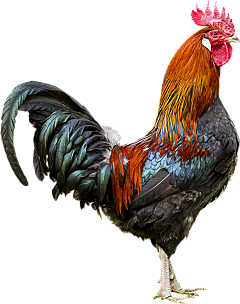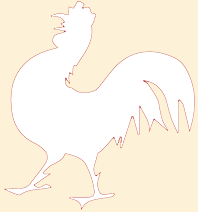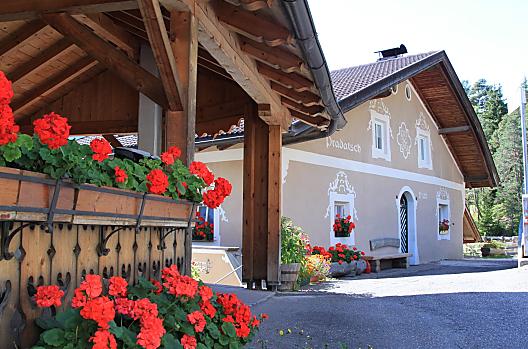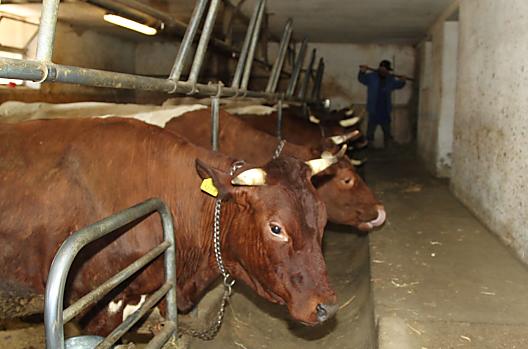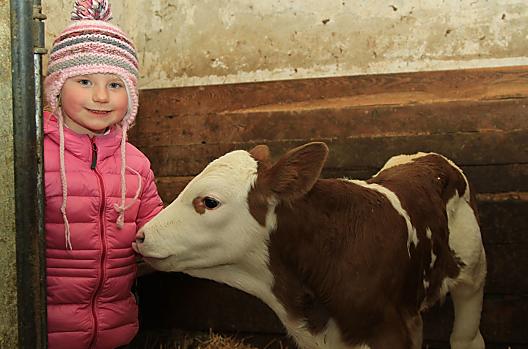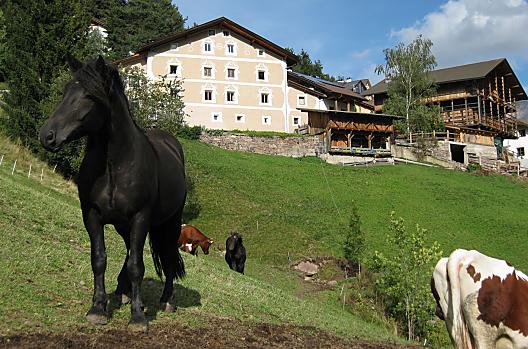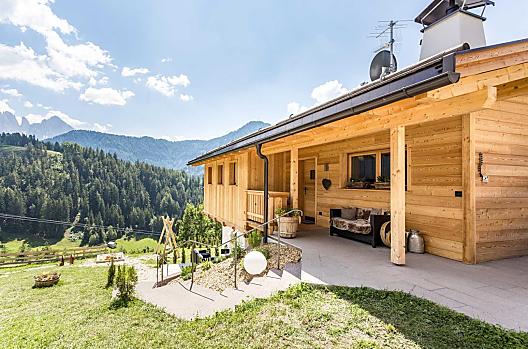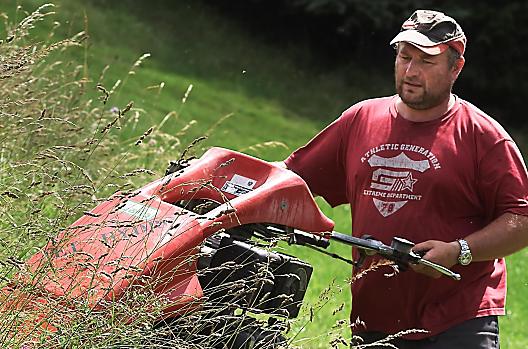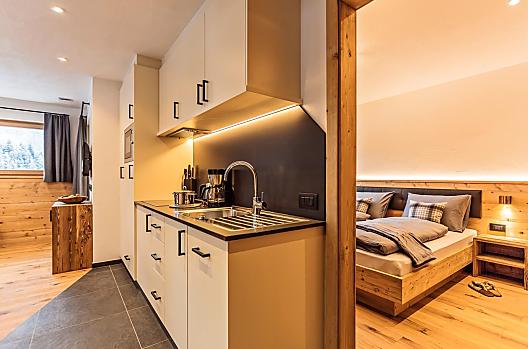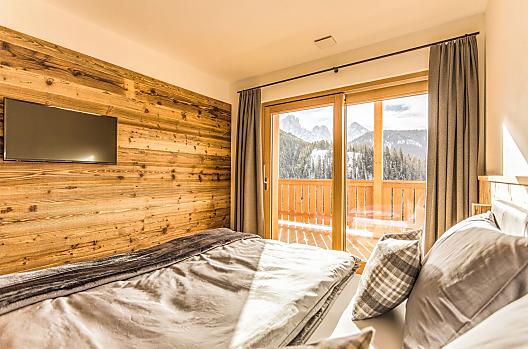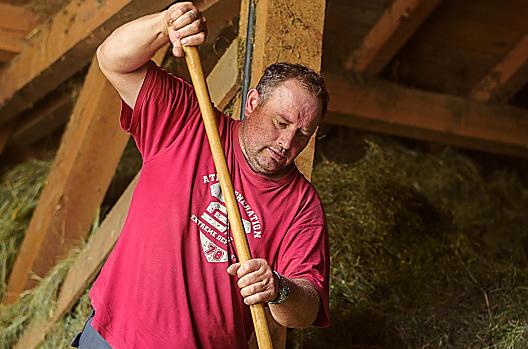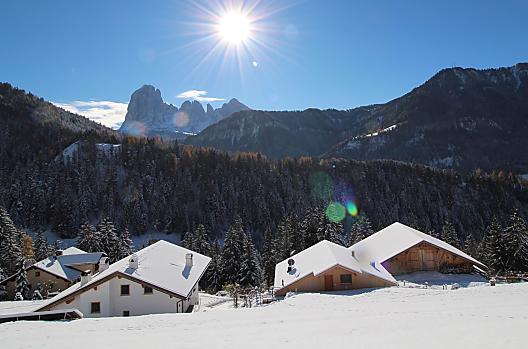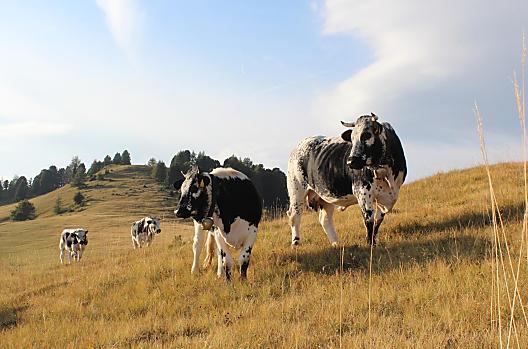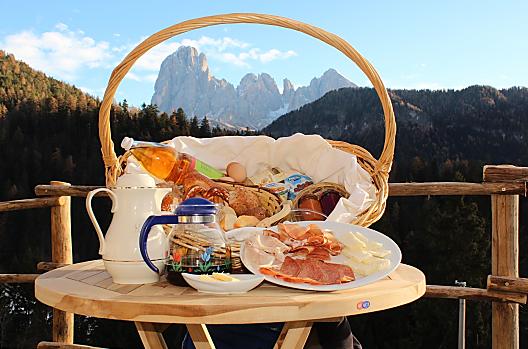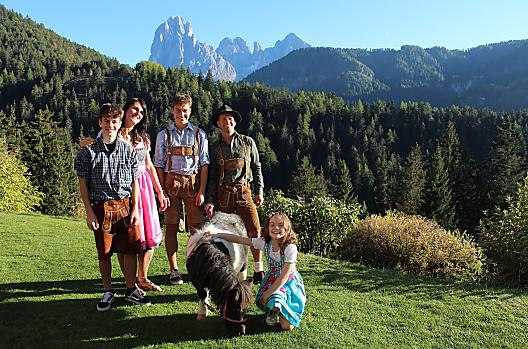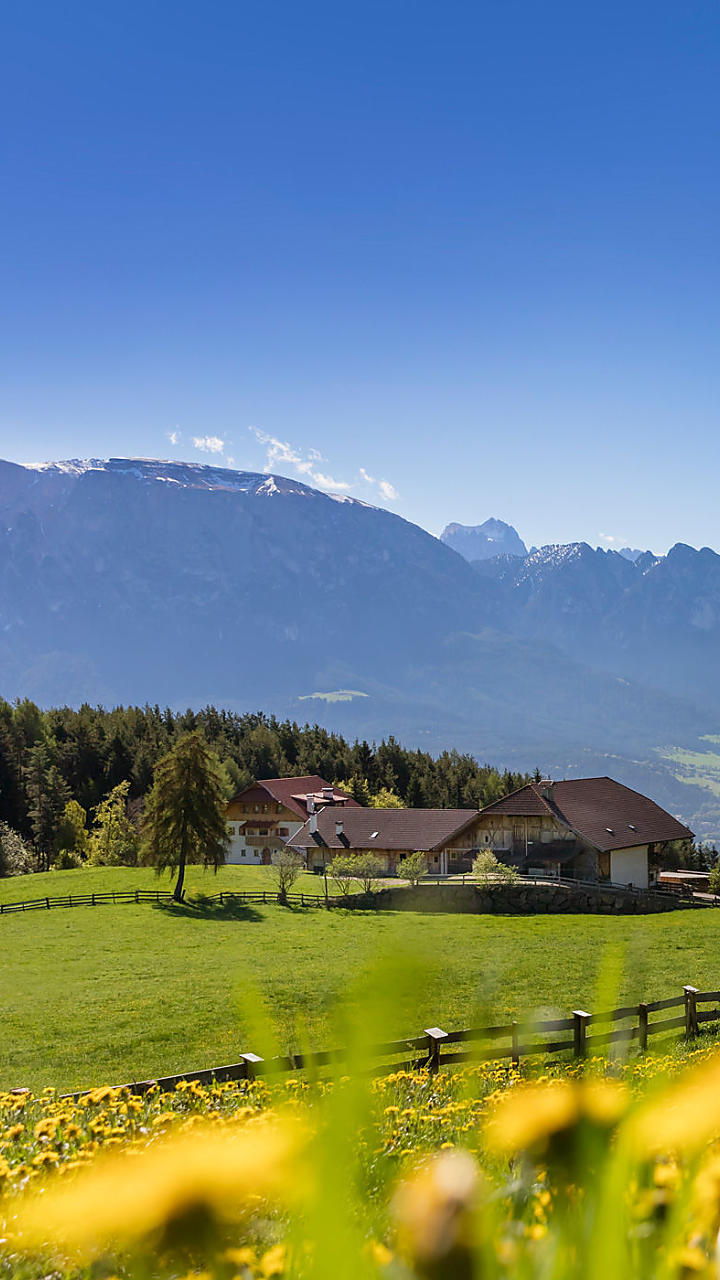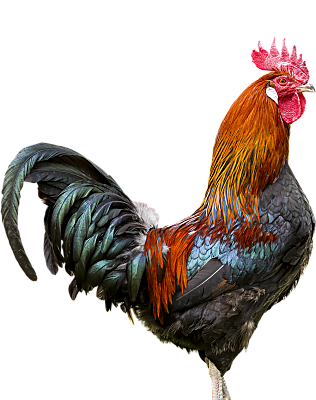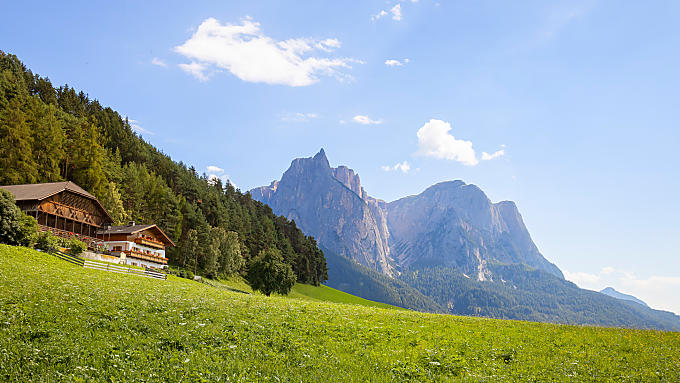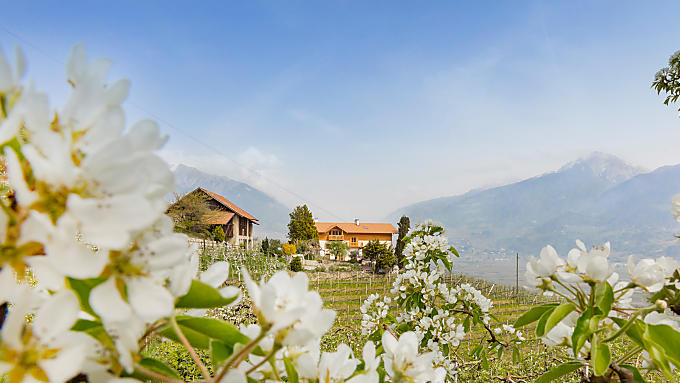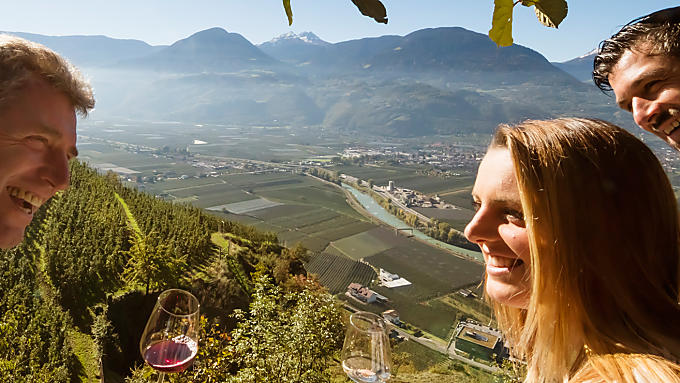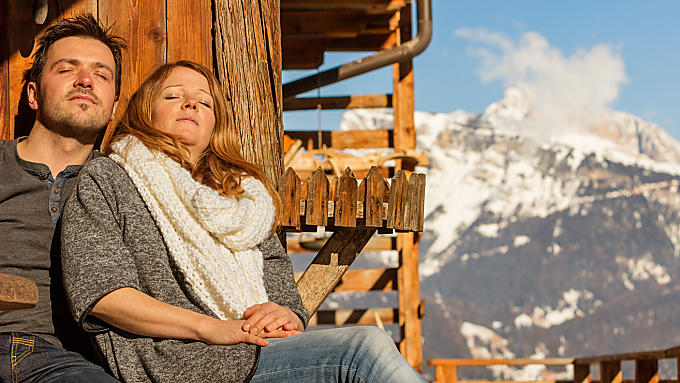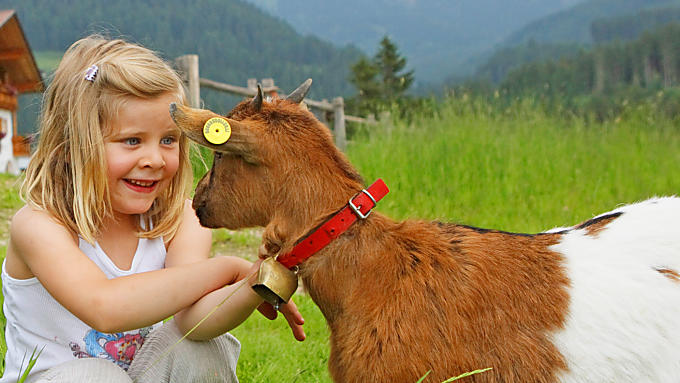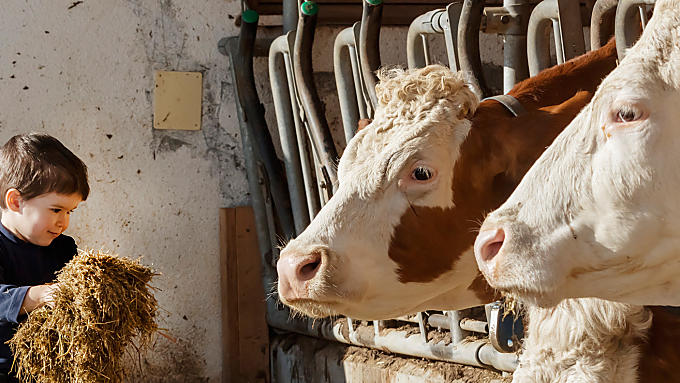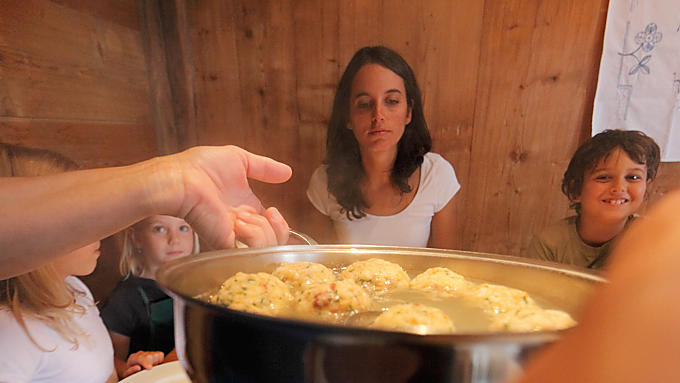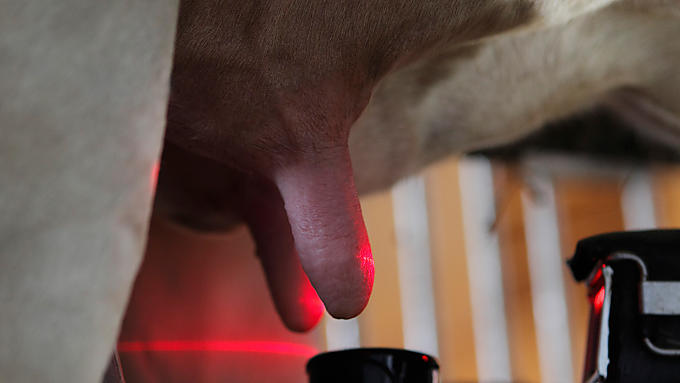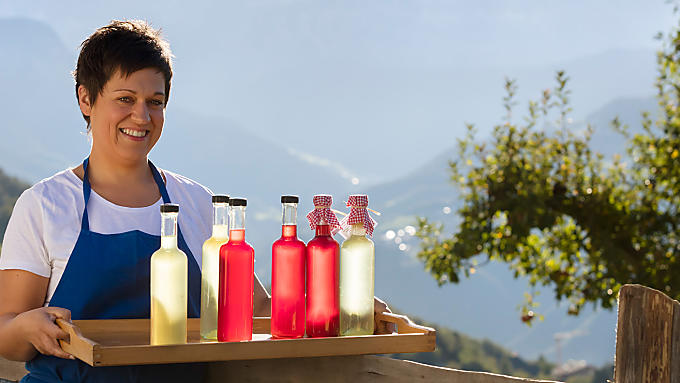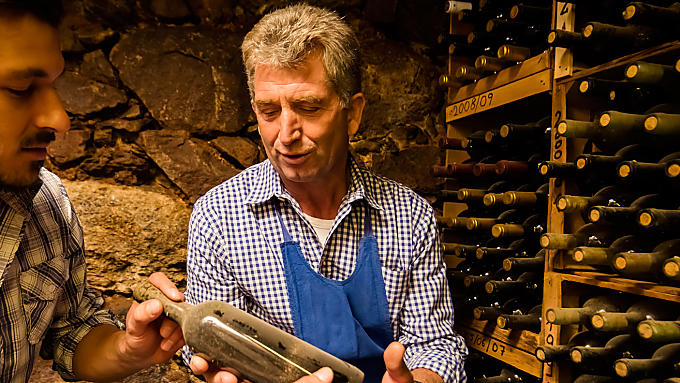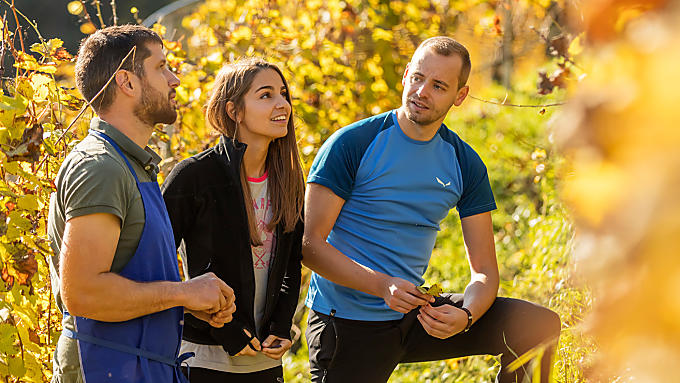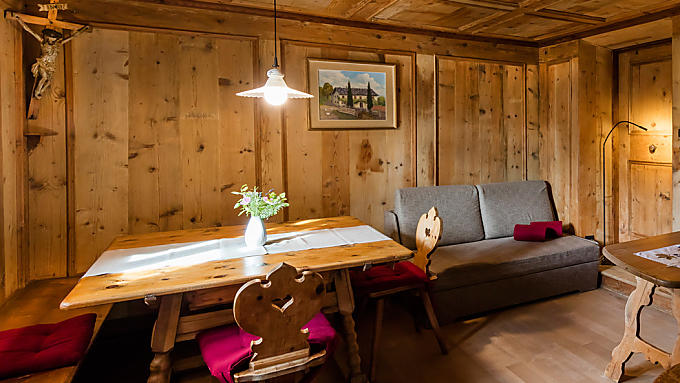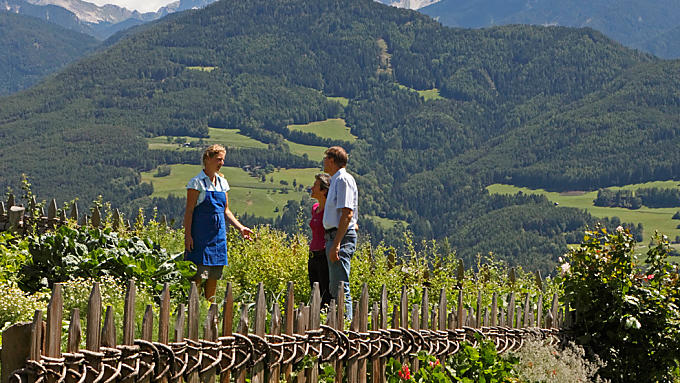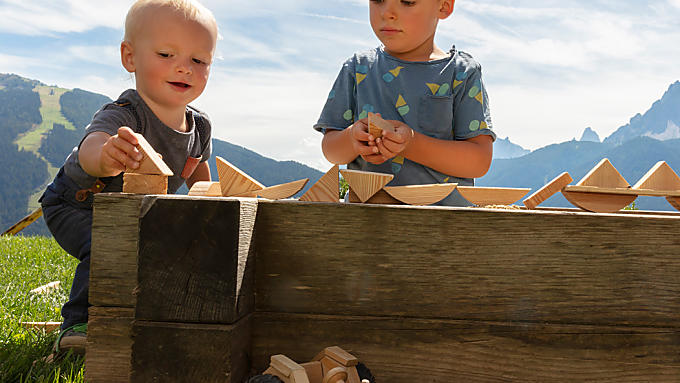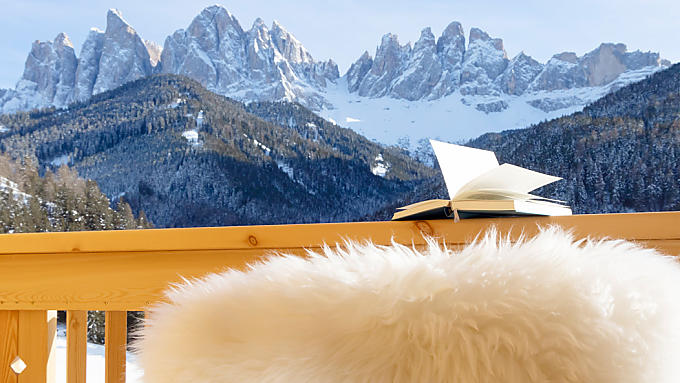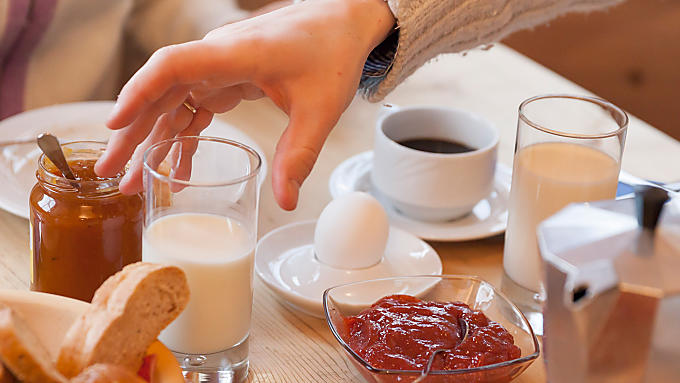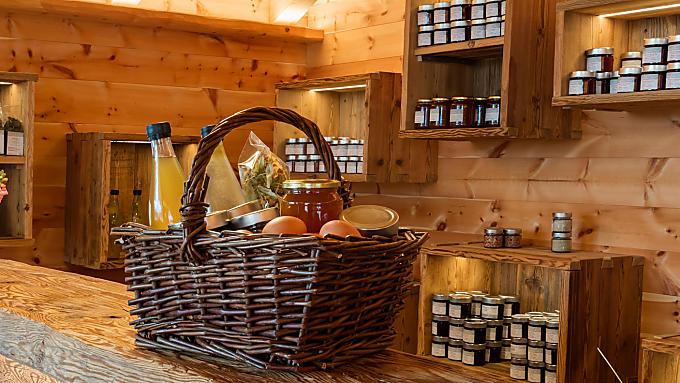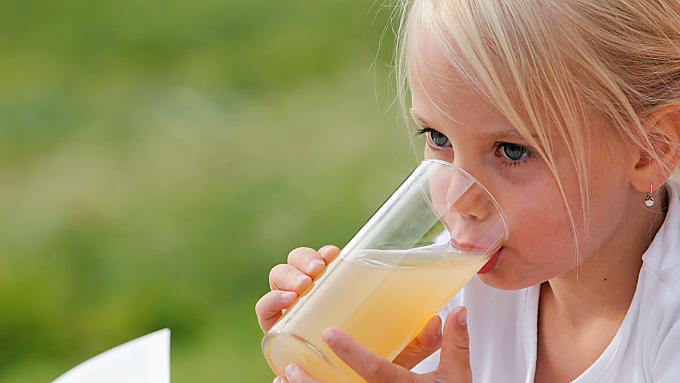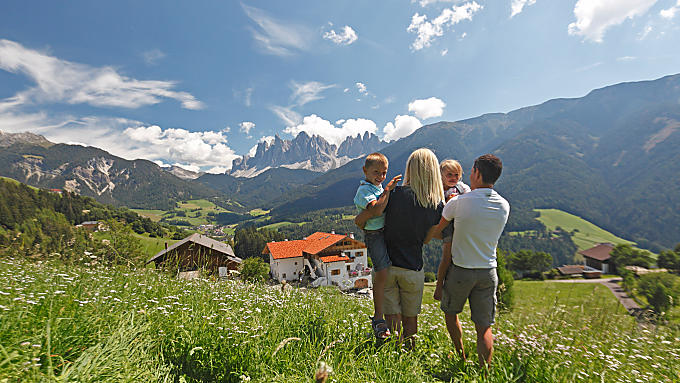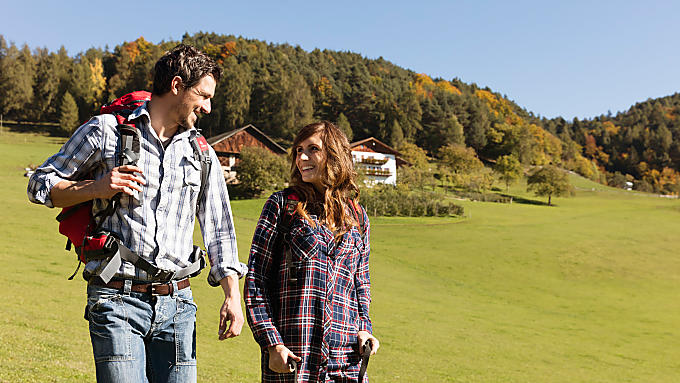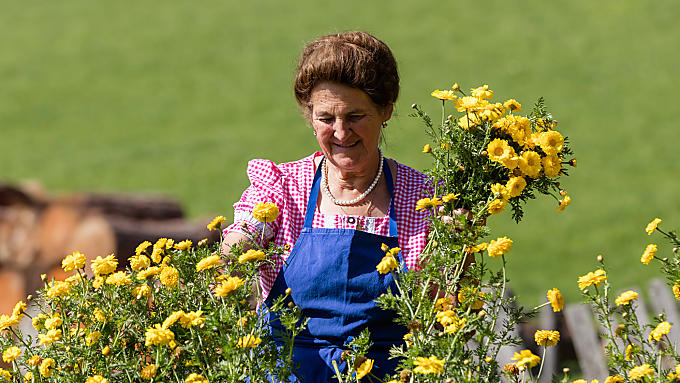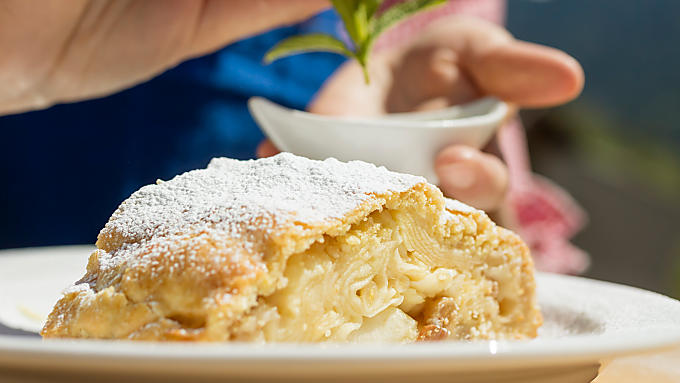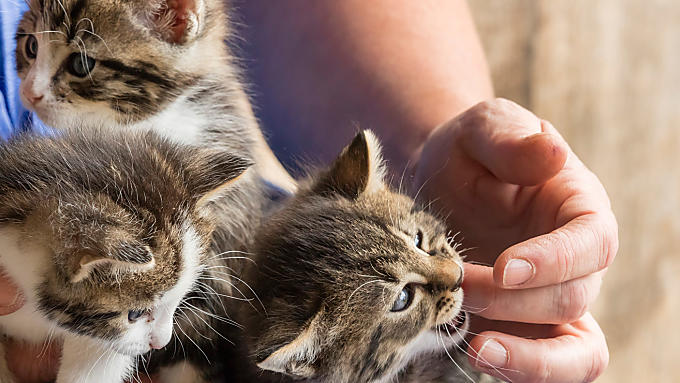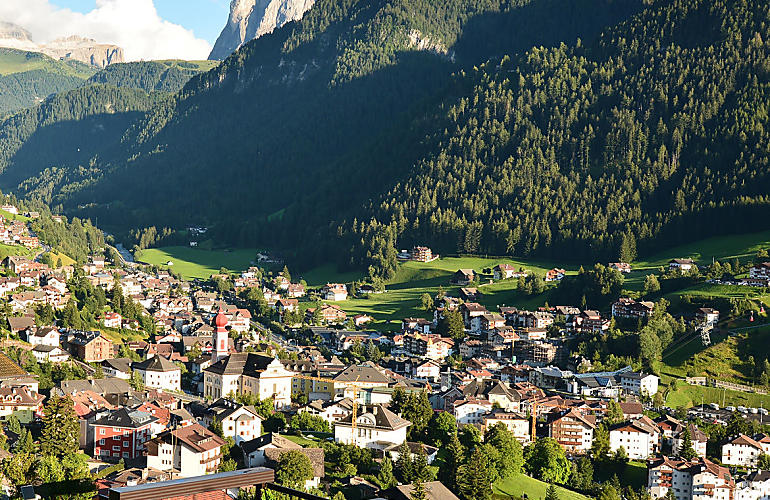
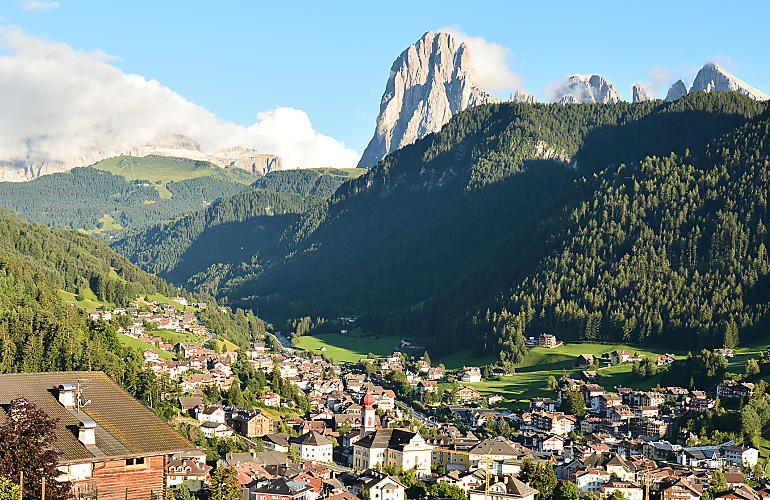
On holiday with Giorgio
Holiday location
Farm Holidays in St. Ulrich
There will be no shortage of music on a Farm Holiday in St. Ulrich. The father of electronic music, Giorgio Moroder, was born here.
Giorgio Moroder was born and brought up in St. Ulrich, and today is at home all over the world. But the founder of electronic music comes back to his native St. Ulrich again and again. This is no wonder, as the village in Gröden Tal valley has turned many heads with its views of the Dolomites and is one of the most famous winter sport resorts in the Alps.
There will be no shortage of music on a Farm Holiday in St. Ulrich. The father of electronic music, Giorgio Moroder, was born here.
Giorgio Moroder was born and brought up in St. Ulrich, and today is at home all over the world. But the founder of electronic music comes back to his native St. Ulrich again and again. This is no wonder, as the village in Gröden Tal valley has turned many heads with its views of the Dolomites and is one of the most famous winter sport resorts in the Alps.
The first people came on holiday to St. Ulrich back in 1850 and there has been no shortage of visitors since then. This led to the locals wondering what else they could offer to make holidaymakers' experience even better, with a sledge club being founded in 1896, an ice rink built in 1907, and the first ski lift in 1935. Nowadays, Gröden caters for all holiday tastes, from tennis courts to an indoor pool.
Wooden figures everywhere
Yet St. Ulrich was already well known before the first people booked their rooms to come here on holiday. Since the 17th century, lots of locals have been involved in woodcarving. The village was famous for its altars, wooden toys and sacred sculptures. For two hundred years, the village was the international centre for woodcarving, until the Second Vatican Council set limits on sacred sculpture. Anyone staying at a holiday flat in St. Ulrich will probably come across a typical Gröden woodcarving inside or outside the property – it's impossible not to meet this traditional artisanal craft on holiday in St. Ulrich.
God's woodcarver
If you visit the various chapels and churches in the village, you'll soon see that the people of Gröden were not just occupied with producing dainty dolls and other toys, which have even been sold in America, but that they cared just as much about adorning their places of worship. The neoclassical parish church of St. Ulrich with its baroque tower, for example, has been decorated by lots of different artists from Gröden. The churches of Antonius and St. Jakob also contain extraordinary works of art by Gröden woodcarvers. Luis Trenker's father was also one of these woodcarvers. The famous film director is buried in the family grave in the graveyard of St. Anna's church. The comprehensive collection in Gröden museum is not just visually interesting, but also features lots of information on woodcarving over the course of the last 400 years.
The first people came on holiday to St. Ulrich back in 1850 and there has been no shortage of visitors since then. This led to the locals wondering what else they could offer to make holidaymakers' experience even better, with a sledge club being founded in 1896, an ice rink built in 1907, and the first ski lift in 1935. Nowadays, Gröden caters for all holiday tastes, from tennis courts to an indoor pool.
Wooden figures everywhere
Yet St. Ulrich was already well known before the first people booked their rooms to come here on holiday. Since the 17th century, lots of locals have been involved in woodcarving. The village was famous for its altars, wooden toys and sacred sculptures. For two hundred years, the village was the international centre for woodcarving, until the Second Vatican Council set limits on sacred sculpture. Anyone staying at a holiday flat in St. Ulrich will probably come across a typical Gröden woodcarving inside or outside the property – it's impossible not to meet this traditional artisanal craft on holiday in St. Ulrich.
God's woodcarver
If you visit the various chapels and churches in the village, you'll soon see that the people of Gröden were not just occupied with producing dainty dolls and other toys, which have even been sold in America, but that they cared just as much about adorning their places of worship. The neoclassical parish church of St. Ulrich with its baroque tower, for example, has been decorated by lots of different artists from Gröden. The churches of Antonius and St. Jakob also contain extraordinary works of art by Gröden woodcarvers. Luis Trenker's father was also one of these woodcarvers. The famous film director is buried in the family grave in the graveyard of St. Anna's church. The comprehensive collection in Gröden museum is not just visually interesting, but also features lots of information on woodcarving over the course of the last 400 years.
Farm search
Holiday farms in St. Ulrich
3 reasons
A holiday in St. Ulrich
Secede: steep Alpine meadows
with Dolomite views
Strolling and browsing
in the village centre
Skiing fun on over
200 kilometres of piste
Mountains made of Dolomite rock
It instantly becomes clear why Luis Trenker's films made not just him famous, but also the Alps, when coming to St. Ulrich for the first time and having a look around.
It instantly becomes clear why Luis Trenker's films made not just him famous, but also the Alps, when coming to St. Ulrich for the first time and having a look around.
The backdrop to a summer's breakfast on the terrace or spending time in the garden is not just provided by the Plattkofel and Langkofel mountains, but by Sass Rigais and Furchetta, too. The mountains closest to St. Ulrich also deserve a mention: the Raschötz on the north side of the village, the Seceda to the east and the Seiser Alm, the Pitzberg and Mittagsspitze to the south. All these peaks are part of Puez-Geisler or Schlern-Rosengarten Nature Parks and are UNESCO World Natural Heritage Sites. There are short or longer hikes to the top as well as the option of simply taking the cable car up.
In winter, a thick blanket of snow and a good 200 kilometres of ski piste lies on the slopes of all these mountains. The Sellaronda, a circular ski route in the Sella massif, which, similar to a kaleidoscope, throws up new views again and again, is particularly famous.

